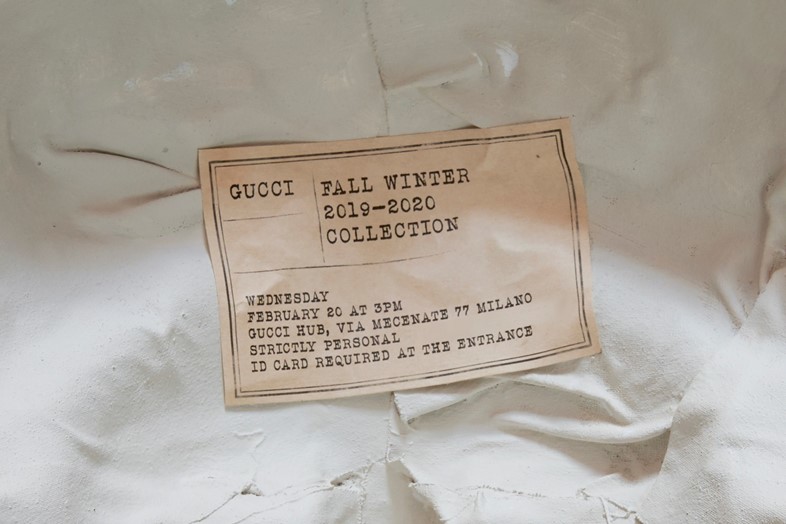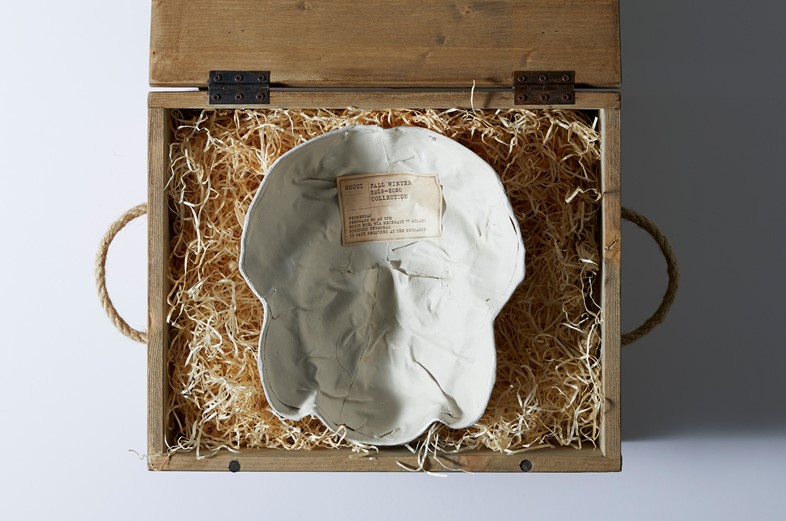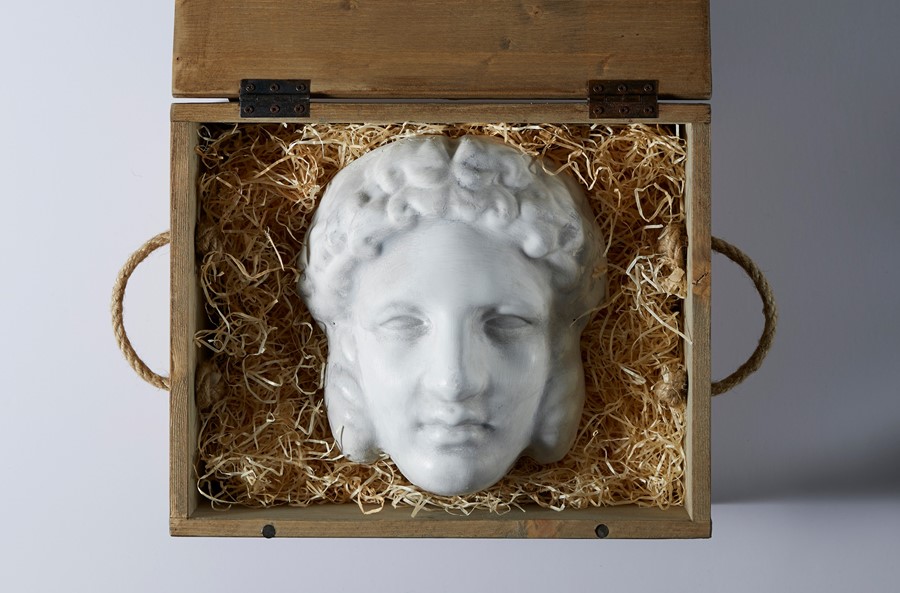The invitation to this afternoon’s Gucci show takes the form of a mask of the head of Hermaphroditus
Fashion show invites used to be esoteric, fantastical. John Galliano issued ripped-off sleeves, cachets of love letters, roses and ballet slippers; Jeremy Scott sent a crushed car door to a French television host to invite her to his debut. Today, you’re more likely to get an email. That is, from every label bar Gucci as helmed by Alessandro Michele, whose invite formats (waxen tapers, embroidered envelopes, glass entomological slides) have become ones fashion insiders pore over, ponder and – often – preserve for posterity.
The invite to the forthcoming Autumn/Winter 2019 show, due to be staged later today in Milan, should prove no exception to that exception. It came in the form cast of a mask of the head of Hermaphroditus – as marked out in Ancient Greek on the lid of its casing, a mini museological crate. It wound up resembling a Hellenistic relic recovered from the deep recesses of an archive. The child of Hermes and Aphrodite, with a name a composite of the two, Hermaphroditus was born a handsome boy and, according to Ovid’s Metamorphoses, was united forever with the water nymph Salmacis in a single fused form thanks to a prayer to the Gods.

Obviously, that underscores Michele’s love of androgyny and the ancient world. But the meaning of the mask is more than the purely aesthetic. Gucci released a brief treatise exploring the idea – contradicting the idea of a mask as synonymous with dissembling and deceiving, it counters that a mask can be authentic, “if by authenticity we mean the possibility to stick to the idea we have of ourselves, the mask becomes the means through which we can become what we feel we are”. That was the case in the 18th century, when masked balls were all the rage because, en masque, you could assume another identity, and, often, misbehave without consequence, however you wished. Back then, a mask was a sign of freedom.

If we’re getting philosophical – and, after that preamble, we inevitably are – then clothes are another mask. They mask the body, at their most basic. But they also ally to those above ideas, and to the idea that a mask represents different impulses and urges: “exhibition and concealment, manifestation and protection, vanity and modesty”. They’re all part of dressing, too, and all considerations Michele explores again and again in his Gucci shows. “Nothing is by accident,” he once told me, after a show in Florence (originally pitched for the Acropolis in Athens, but an aim scuppered). “You are trying to translate your point of view. If you have to cover yourself, it means that you are expressing something more.”

